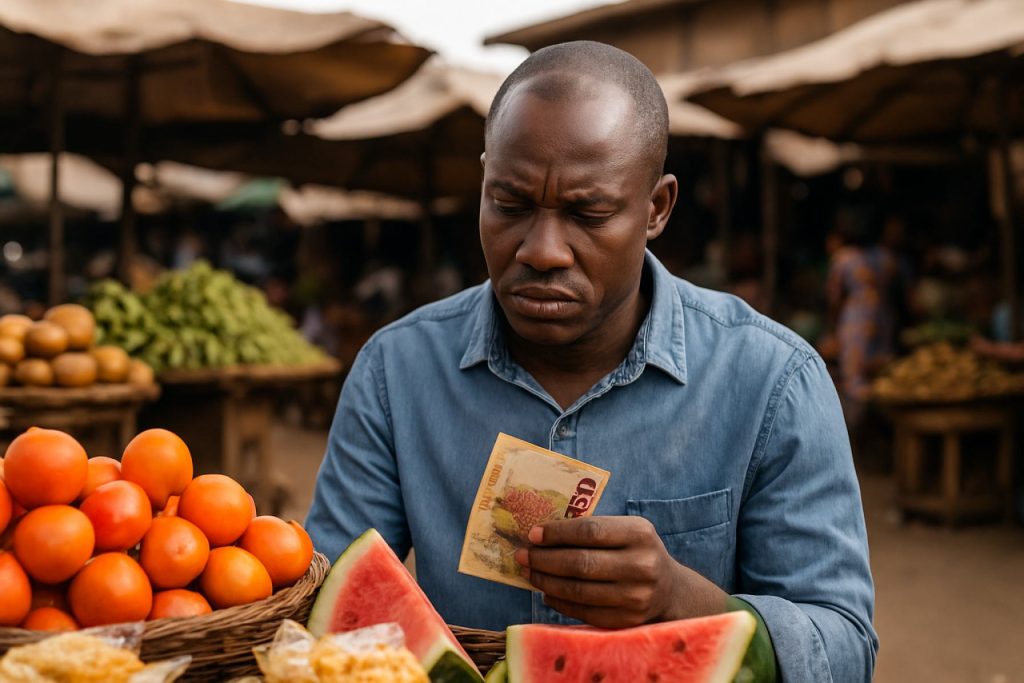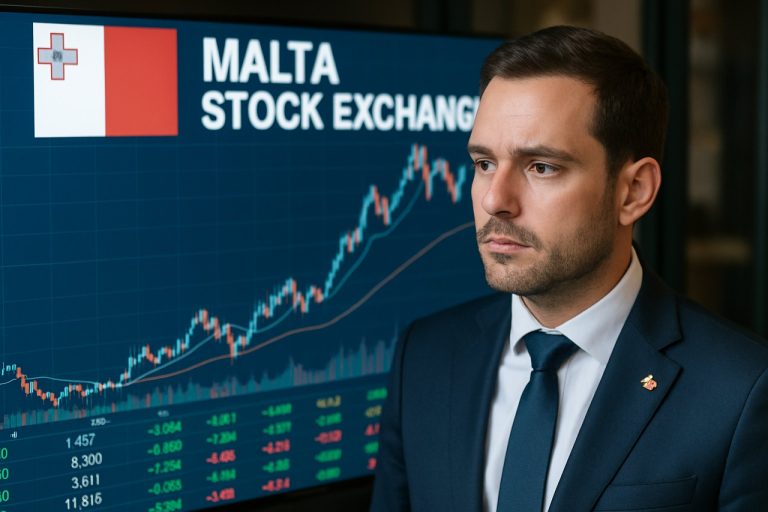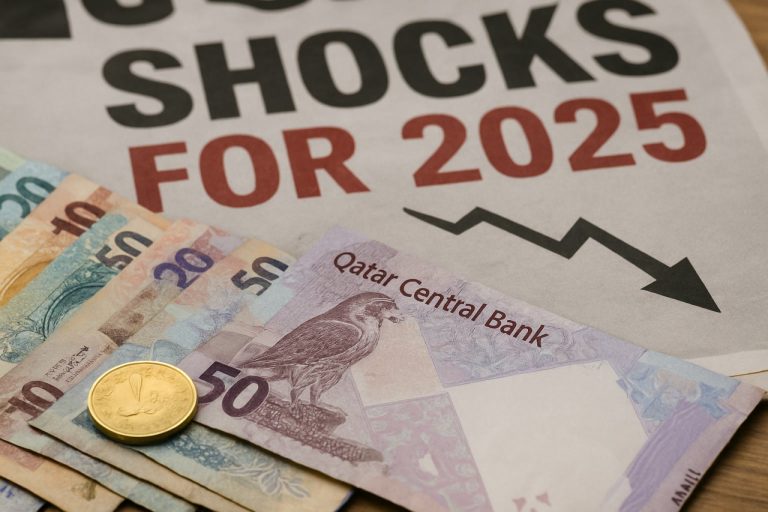
Table of Contents
- Executive Summary: Inflation in Côte D’Ivoire—2025 and Beyond
- Key Statistics: Current Inflation Rates and Historical Context
- Primary Drivers: What’s Fueling Price Changes?
- Government Policy Responses and Economic Interventions
- Monetary Policy and Central Bank Actions (BCEAO)
- Impact on Businesses and Consumers
- Legal, Tax, and Regulatory Compliance Issues
- Sector Analysis: Agriculture, Energy, and Imports
- Future Outlook: Projections Through 2029
- Official Resources and Methodology (e.g., ins.ci, bceao.int)
- Sources & References
Executive Summary: Inflation in Côte D'Ivoire—2025 and Beyond
Côte d’Ivoire’s inflation trajectory in 2025 reflects both global shocks and domestic resilience. Following a period of heightened inflation during 2022–2023—largely driven by food and energy price volatility due to external factors—2024 and 2025 are showing signs of moderation. According to the Institut National de la Statistique de Côte d'Ivoire, headline inflation fluctuated between 5% and 6% in the aftermath of the pandemic and the Ukraine conflict, notably surpassing the West African Economic and Monetary Union (WAEMU) target ceiling of 3%.
In response, the government, in collaboration with the Banque Centrale des Etats de l’Afrique de l’Ouest (BCEAO), implemented a series of fiscal and monetary measures to stabilize prices. Key interventions included price controls on staple foods, targeted subsidies, and adjustments in the BCEAO policy rate. The BCEAO incrementally raised its main policy rate from 2.5% in 2022 to 3.5% in late 2024 to curb inflationary pressures while maintaining economic growth momentum.
On the legislative and compliance front, Côte d’Ivoire has enforced regular price monitoring and reporting requirements on food and energy distributors, as mandated by the Ministère du Commerce, de l'Industrie et de la Promotion des PME. These compliance measures are designed to prevent artificial price hikes and enhance market transparency. Additionally, recent amendments to consumer protection laws strengthened administrative penalties for non-compliance, reinforcing the government’s inflation management strategy.
Looking ahead, projections from the BCEAO and Institut National de la Statistique de Côte d'Ivoire anticipate a gradual return toward the WAEMU inflation target by late 2025 and into 2026. This optimistic outlook is underpinned by expected stabilization in global commodity markets, ongoing public investment in agriculture to boost local food supply, and continued policy vigilance. Nonetheless, risks remain, including potential external shocks and climate variability that could impact food prices. Continued adherence to WAEMU convergence criteria and vigilant enforcement of price controls will be essential to sustaining price stability in Côte d’Ivoire over the medium term.
Key Statistics: Current Inflation Rates and Historical Context
Côte d’Ivoire has experienced notable fluctuations in inflation over the past decade, reflecting both domestic and global economic pressures. As of early 2025, the country’s annual inflation rate remains moderate but above the regional target, with the latest available figures indicating a year-on-year inflation rate of approximately 4.6% at the close of 2024. This represents a slight decrease from the peak of 5.2% recorded in 2022, which was driven by disruptions in global supply chains, increased food and fuel prices, and the lingering effects of the COVID-19 pandemic.
Historically, Côte d’Ivoire’s inflation rate has been relatively stable compared to many sub-Saharan African countries, largely due to its membership in the West African Economic and Monetary Union (WAEMU). The WAEMU framework, underpinned by the CFA franc’s peg to the euro, aims to maintain inflation below 3% across member states. However, Côte d’Ivoire, like many of its peers, has struggled to meet this target in recent years as external shocks, such as the Russia-Ukraine conflict and global commodity price volatility, have exerted upward pressure on consumer prices.
The Institut National de la Statistique de Côte d'Ivoire reports that food and non-alcoholic beverages, which account for a significant portion of household consumption, have been the principal drivers of inflationary pressures. Between 2021 and 2024, food inflation averaged 5.8% annually, outpacing general inflation and reflecting both local supply constraints and imported price increases. Additionally, transport and housing costs have contributed to the overall rise in the consumer price index (CPI).
To address these trends, the government has implemented a range of fiscal and regulatory measures aimed at stabilizing prices and supporting vulnerable populations. Policies include temporary subsidies on key staples, price controls on selected goods, and targeted social assistance programs. Compliance with WAEMU convergence criteria remains a priority, with the government affirming its commitment to medium-term fiscal consolidation and price stability under the regional surveillance mechanisms of the Banque Centrale des États de l'Afrique de l'Ouest.
Looking ahead, inflation in Côte d’Ivoire is projected to moderate gradually, assuming continued improvement in global supply conditions and effective domestic policy implementation. Authorities forecast a return to the WAEMU inflation target of below 3% by 2026, contingent on favorable external factors and sustained macroeconomic discipline. However, risks persist, particularly from international commodity markets and potential climate-related disruptions to domestic agriculture.
Primary Drivers: What’s Fueling Price Changes?
Inflation trends in Côte d’Ivoire for 2025 continue to reflect a complex interplay of domestic and global factors. The country, a leading economy in West Africa, has experienced moderate inflation over recent years, with the rate largely influenced by food prices, energy costs, and external shocks. According to the Institut National de la Statistique (INS), annual inflation in 2024 remained in the range of 4–5%, slightly above the regional convergence criterion set by the West African Economic and Monetary Union (WAEMU), which targets an inflation rate below 3%.
The primary drivers of price changes in 2025 can be categorized as follows:
- Food and Agricultural Prices: Food inflation remains a persistent challenge, as agricultural production is sensitive to weather variability and supply chain bottlenecks. Côte d’Ivoire, despite being a major exporter of cocoa and cashew nuts, still relies on imports for several essential food items. Disruptions in local supply due to seasonal rains or pest infestations, coupled with international price volatility, have contributed to upward pressure on consumer prices (Institut National de la Statistique).
- Energy and Fuel Costs: The cost of petroleum products directly impacts transportation and production costs. Although the government maintains subsidies on certain fuel products, fluctuations in global oil prices and adjustments to local pricing mechanisms have occasionally led to fuel price hikes, feeding into broader inflation (Gouvernement de Côte d’Ivoire).
- Exchange Rate Policy: The fixed exchange rate of the CFA franc to the euro, managed by the Banque Centrale des États de l’Afrique de l’Ouest (BCEAO), generally helps anchor inflation expectations. However, imported inflation remains a risk, especially with the euro’s fluctuations against other major currencies, affecting import prices for essential goods and services.
- Regulatory and Fiscal Measures: The government has enacted several measures to mitigate inflation, including temporary tax relief on basic food imports and increased monitoring of market practices to curb price gouging. These interventions are in line with WAEMU recommendations for price stability and are periodically reviewed for compliance and effectiveness (Ministère de l’Économie et des Finances).
Looking ahead, the inflation outlook for Côte d’Ivoire is cautiously optimistic. While food and energy continue to pose risks, ongoing investments in infrastructure, efforts to diversify the economy, and regional monetary cooperation are expected to support price stability. Nevertheless, vigilance remains necessary to address external shocks and ensure compliance with regional inflation targets.
Government Policy Responses and Economic Interventions
Côte d’Ivoire has experienced dynamic inflation trends in recent years, shaped by internal economic reforms and external shocks. Throughout 2023 and 2024, inflation surged due to global supply chain disruptions, elevated energy prices, and food import dependency. The annual inflation rate reached approximately 5.2% in early 2023, surpassing the regional convergence criteria set by the West African Economic and Monetary Union (WAEMU), which targets a ceiling of 3% inflation for member states. In response, the government and regional monetary authorities have implemented a series of policy measures to restore price stability and ensure macroeconomic resilience in 2025 and beyond.
- Monetary Policy Coordination: The Central Bank of West African States (BCEAO) raised its key interest rates multiple times between 2022 and 2024 to curb inflationary pressures—a move that directly affects Côte d’Ivoire as a WAEMU member. The BCEAO’s interventions included increasing the minimum bid rate for liquidity injections and tightening access to refinancing facilities, aiming to dampen excess liquidity in the banking system and anchor inflation expectations (Banque Centrale des États de l'Afrique de l'Ouest).
- Fiscal Policy and Subsidies: The Ivorian government expanded targeted subsidies on essential food and fuel products during 2023–2024 to directly shield vulnerable households from price spikes. These interventions were paired with tighter controls on market prices for staple goods and a temporary reduction in import duties for certain commodities (Ministère de l’Économie et des Finances de Côte d'Ivoire).
- Legal and Compliance Framework: Côte d’Ivoire strengthened its legal framework to combat price gouging and speculative practices, enhancing the enforcement role of the National Competition Council. This included increased inspections and penalties for non-compliant retailers and wholesalers (Conseil de la Concurrence de Côte d'Ivoire).
- Outlook for 2025 and Beyond: The Ministry of Economy and Finance forecasts a gradual decline in inflation, projecting it to return closer to the WAEMU target by late 2025, contingent on continued fiscal discipline and stable global commodity prices. Structural reforms, such as boosting domestic agricultural production and improving logistics, are expected to further stabilize consumer prices in the medium term.
In summary, Côte d’Ivoire’s multi-pronged approach—coordinated monetary policy, targeted subsidies, strengthened compliance, and ongoing structural reforms—is expected to moderate inflation in 2025, enhancing the country’s economic stability and compliance with regional convergence criteria.
Monetary Policy and Central Bank Actions (BCEAO)
Côte d’Ivoire’s inflation dynamics in 2025 are shaped by both domestic and regional factors, with the Central Bank of West African States (BCEAO) playing a pivotal role through its monetary policy framework. As a member of the West African Economic and Monetary Union (WAEMU), Côte d’Ivoire shares a common currency—the West African CFA franc—and monetary policy decisions are coordinated regionally.
According to the Central Bank of West African States (BCEAO), headline inflation in Côte d’Ivoire moderated during 2024, following a period of elevated rates in 2022–2023 that were largely driven by food and energy price shocks. BCEAO data indicates that the annual inflation rate for Côte d’Ivoire stabilized around 3% at the end of 2024, remaining within the WAEMU convergence criterion of less than 3%. This improvement was mainly attributable to easing supply chain pressures and robust agricultural production, which helped temper food price increases.
In response to previous inflationary pressures, the BCEAO has implemented a series of policy rate hikes since mid-2022, raising its key policy rate from 2.5% to 3.5% by late 2024. The central bank’s Monetary Policy Committee reaffirmed its commitment in early 2025 to maintaining a prudent stance, signaling that policy rates would remain elevated until inflation expectations are firmly anchored and price stability is secured. These actions are consistent with the BCEAO’s legal mandate to ensure monetary and financial stability across the union, as established under the WAEMU statutes (Central Bank of West African States).
From a regulatory compliance perspective, the BCEAO continues to oversee strict adherence to reserve requirements and prudential standards for commercial banks operating in Côte d’Ivoire. These measures are designed to ensure adequate liquidity in the financial system while preventing excessive credit growth that could fuel inflation.
Looking ahead, the BCEAO projects that inflation in Côte d’Ivoire will hover near the 3% threshold through 2025 and into the medium term, barring unforeseen shocks to global commodity markets or supply chains. The central bank has highlighted risks associated with global energy prices and regional security concerns, but expects that ongoing policy vigilance and structural reforms will support price stability (Central Bank of West African States).
- Inflation rate (2024): ≈3% (BCEAO)
- Policy rate (2025): 3.5% (BCEAO)
- Inflation outlook: Stable, near 3% (BCEAO)
- Ongoing policy: Tight monetary stance, reserve requirements enforced
- Main risks: Volatility in global energy/food prices, security developments
Impact on Businesses and Consumers
Inflation in Côte d’Ivoire has shown significant fluctuations in recent years, with direct impacts on both businesses and consumers. According to the Institut National de la Statistique, consumer price inflation averaged 5.2% in 2023 but began to moderate in early 2024, reflecting improved agricultural output and stable import costs. However, the inflation outlook for 2025 remains uncertain due to global commodity price volatility and regional security challenges.
The government has responded to inflationary pressures with policy interventions designed to stabilize prices and protect purchasing power. For instance, the Ministry of Commerce, Industry and Promotion of SMEs maintains regular price controls on essential goods such as rice, sugar, and cooking oil. In 2024, the ministry issued directives to cap price increases on these items (Ministère du Commerce, de l’Industrie et de la Promotion des PME), with enforcement mechanisms involving spot inspections and penalties for non-compliance.
Businesses, particularly in the manufacturing and retail sectors, have faced increased costs due to imported raw materials and logistics disruptions. Compliance with new regulations—including reporting requirements on pricing and stock levels—has added administrative burdens. The Ministry of Economy and Finance continues to monitor inflation trends and supports affected sectors with targeted tax relief and credit facilities (Ministère de l'Économie et des Finances).
For consumers, rising food and fuel prices have eroded real incomes, especially in urban areas. The 2024 household survey by the national statistics office found that over 60% of families adjusted consumption habits in response to inflation, favoring cheaper substitutes or reducing discretionary spending (Institut National de la Statistique). Social safety net programs, such as targeted subsidies and cash transfers, have been expanded to cushion the impact on vulnerable groups.
Looking ahead to 2025 and beyond, the inflation trajectory will depend on both domestic agricultural production and external factors, including global energy prices and regional economic stability. The Central Bank of West African States (BCEAO) projects inflation to remain within the 1-3% convergence target for the West African Economic and Monetary Union by 2026, provided current monetary and fiscal measures are maintained (Banque Centrale des États de l'Afrique de l'Ouest). Continued vigilance and regulatory compliance will be essential for businesses, while consumers may see gradual relief if inflation moderates as forecasted.
Legal, Tax, and Regulatory Compliance Issues
In 2025, inflation management remains a central concern in Côte d’Ivoire’s legal, tax, and regulatory environment. The country experienced significant inflationary pressures in the early 2020s, largely due to global supply chain disruptions, fluctuating commodity prices, and local factors impacting food and energy costs. According to data from the Institut National de la Statistique (INS), year-on-year inflation peaked above 5% in 2022 before moderating to estimates between 3% and 4% in subsequent years, reflecting both monetary interventions and improved supply conditions.
The legal framework for inflation control is grounded in Côte d’Ivoire’s membership of the West African Economic and Monetary Union (WAEMU), which imposes convergence criteria, including a regional inflation ceiling of 3%. The Banque Centrale des États de l'Afrique de l'Ouest (BCEAO) is responsible for monetary policy and has implemented a mix of interest rate adjustments and liquidity management measures to support price stability across its member states. In 2024, the BCEAO maintained a relatively tight monetary stance to curb inflationary risks, signaling a continued commitment for 2025 and beyond.
Tax policy has also adapted to inflationary realities. The 2024 Finance Law, enacted by the Direction Générale des Impôts, includes targeted fiscal measures—such as temporary VAT reductions on staple foods and fuel subsidies—to protect purchasing power and mitigate the impact of rising prices on vulnerable populations. These interventions are subject to ongoing review and compliance oversight, with a focus on balancing revenue mobilization and economic stability.
Regulatory authorities have emphasized compliance with price control orders and anti-profiteering regulations, particularly in the food and energy sectors. The Ministère du Commerce, de l’Industrie et de la Promotion des PME regularly issues directives capping prices on essential goods and has increased inspections to enforce compliance and sanction violations. Businesses are required to maintain transparent pricing and accurate documentation to meet regulatory scrutiny.
Looking ahead, the inflation outlook for Côte d’Ivoire is cautiously optimistic. While external risks—such as global commodity price volatility and regional security challenges—persist, ongoing reforms and regional monetary cooperation are expected to anchor medium-term inflation near the WAEMU target. Nonetheless, legal and tax compliance obligations will remain dynamic, requiring companies to monitor legislative updates and maintain robust internal controls as the government adapts policies to evolving economic conditions.
Sector Analysis: Agriculture, Energy, and Imports
Côte d’Ivoire’s inflation trends in 2025 are shaped by developments across agriculture, energy, and import sectors, all central to both the national economy and household welfare. As a member of the West African Economic and Monetary Union (WAEMU), Côte d’Ivoire’s monetary policy is closely tied to the CFA franc and regional price stability targets.
In 2024 and early 2025, official data indicate that inflation has remained above the WAEMU convergence criterion of 3%, though it is projected to moderate compared to the post-pandemic highs. Key drivers include global commodity price fluctuations, localized supply chain disruptions, and evolving trade dynamics. The Institut National de la Statistique reported an average annual inflation rate of 4.9% in 2023, with food, fuel, and imported goods as the primary contributors.
- Agriculture: Côte d’Ivoire’s agricultural sector, particularly cocoa and cashew production, continues to face volatility due to climate variability and input costs. Price increases in fertilizers and transportation have contributed to the rising cost of staple foods. Government interventions—such as price controls on key commodities and subsidies for farm inputs—have partially cushioned consumers, but persistent supply-side pressures maintain upward pressure on food prices (Ministère d’État, Ministère de l’Agriculture et du Développement Rural).
- Energy: Energy price trends, especially regarding petroleum products, play a significant role in overall inflation. The government continues to regulate pump prices through a stabilization fund, but global oil market volatility in 2024–2025 has resulted in periodic adjustments to domestic fuel prices. This has a cascading effect on transport costs and, by extension, the cost of goods and services (Ministère des Mines, du Pétrole et de l'Énergie).
- Imports: Imports remain a crucial inflation channel, given the reliance on foreign goods for food, manufactured items, and industrial inputs. The depreciation of the CFA franc against the US dollar and euro has added to import costs, despite efforts by the Ministère de l’Économie et des Finances to stabilize exchange rates through prudent fiscal management.
Looking ahead to 2025 and beyond, the inflation outlook remains moderately elevated, though authorities anticipate gradual easing as global supply chains stabilize and domestic reforms—such as enhanced agricultural productivity and energy sector investments—take effect. Vigilance in compliance with WAEMU’s inflation targets and fiscal discipline will be crucial to sustaining economic stability (Banque Centrale des États de l'Afrique de l'Ouest).
Future Outlook: Projections Through 2029
Côte d’Ivoire’s inflation trajectory in 2025 and extending through 2029 is shaped by a confluence of global market forces, domestic policy adjustments, and regional economic integration. As a member of the West African Economic and Monetary Union (WAEMU), Côte d’Ivoire aligns its monetary policy closely with the region’s central bank, the Banque Centrale des États de l'Afrique de l'Ouest (BCEAO). This integration imposes a convergence criterion aiming to keep annual inflation below 3%. However, recent years have seen pressures from global commodity prices, supply chain disruptions, and domestic policy responses.
In 2023 and 2024, Côte d’Ivoire experienced moderate inflation, with the annual rate hovering between 4% and 5% according to official data from the national statistics institute Institut National de la Statistique (INS Côte d'Ivoire). Price increases were driven by imported food and energy costs, exacerbated by international market volatility. In response, authorities implemented targeted fiscal measures to mitigate the impact on vulnerable populations, including subsidies and price controls on key staples.
- Monetary Policy and Compliance: The BCEAO maintained a cautious stance, gradually tightening liquidity conditions to curb inflationary pressures while ensuring adequate credit flow to productive sectors. Policy coordination with the Ministry of Economy and Finance has emphasized compliance with WAEMU’s fiscal deficit ceiling and debt sustainability frameworks (Ministère de l'Économie et des Finances de Côte d'Ivoire).
- Legal and Regulatory Developments: No major legislative changes directly targeting inflation control were introduced in 2024. However, enforcement of existing consumer protection laws was strengthened to prevent price gouging and ensure market transparency (Ministère du Commerce, de l’Industrie et de la Promotion des PME).
- Statistical Outlook: The official inflation forecast for 2025 projects a moderation to around 3.5%, assuming normalization in global commodity prices and ongoing government interventions. The medium-term outlook (2026–2029) anticipates further convergence toward the WAEMU benchmark, barring external shocks.
- Risks and Uncertainties: Key downside risks include renewed volatility in international food and fuel prices, climate-related disruptions to agriculture, and regional security concerns. Structural reforms in logistics, agriculture, and energy are critical to anchoring inflation expectations over the long term.
In summary, Côte d’Ivoire’s inflation is expected to gradually subside in the coming years, provided that global conditions stabilize and domestic policy discipline is maintained. Authorities remain vigilant, ready to deploy both monetary and fiscal tools to uphold price stability and protect household purchasing power.
Official Resources and Methodology (e.g., ins.ci, bceao.int)
Understanding inflation trends in Côte d’Ivoire requires careful reference to official resources and methodologies employed by national and regional authorities. The primary institution responsible for collecting and disseminating inflation data is the Institut National de la Statistique (INS), which provides monthly Consumer Price Index (CPI) reports and annual inflation summaries. The INS uses internationally accepted standards for price collection, basket composition, and data validation, ensuring comparability and reliability of inflation statistics. Detailed methodologies are published and regularly updated by INS to reflect changes in consumption patterns and regulatory requirements (Institut National de la Statistique).
At the regional level, the Central Bank of West African States (BCEAO) plays a pivotal role in monitoring and guiding monetary policy across the West African Economic and Monetary Union (WAEMU), of which Côte d’Ivoire is a member. The BCEAO sets the regional inflation target and publishes quarterly and annual reports analyzing inflationary pressures, monetary aggregates, and macroeconomic outlooks for each member country. BCEAO’s methodology for inflation measurement closely aligns with the harmonized standards of the union, providing an integrated view of price stability and policy compliance (Banque Centrale des États de l'Afrique de l'Ouest).
Key events shaping recent inflation trends in Côte d’Ivoire include global commodity price shocks, fiscal responses to economic disruptions, and regulatory interventions on food and energy prices. In compliance with regional directives, Côte d’Ivoire has implemented temporary tax cuts and subsidies to mitigate inflationary pressures on essential goods. Legislative and executive actions are documented in official government releases and are regularly assessed for effectiveness by both the ministry in charge of finance and BCEAO compliance committees (Ministère de l’Économie et des Finances).
For 2025 and the outlook through the following years, official projections indicate a gradual moderation of inflation, contingent on global supply chain stabilization, sustained agricultural output, and ongoing fiscal discipline. INS and BCEAO regularly update their forecasts based on evolving economic conditions, and these projections are publicly accessible for transparency and policy evaluation purposes. Researchers and policymakers are encouraged to rely on official data portals and methodological notes provided by INS and BCEAO for the most accurate, up-to-date inflation statistics and analyses.



